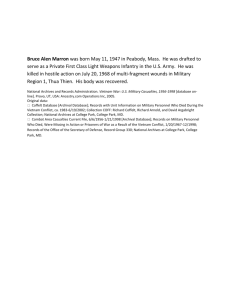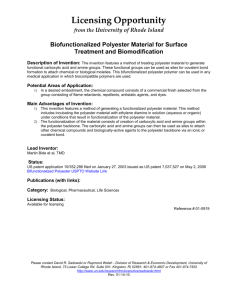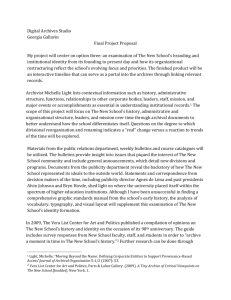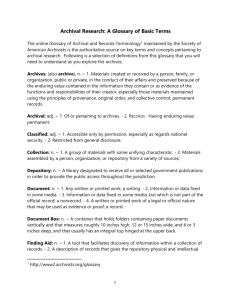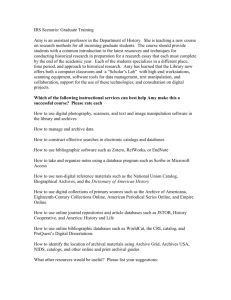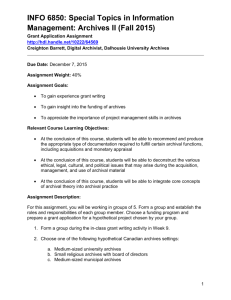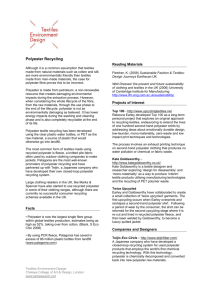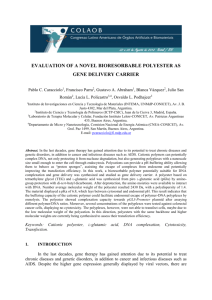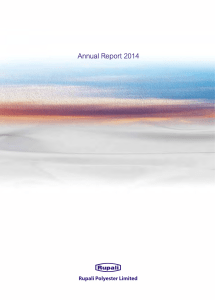File
advertisement
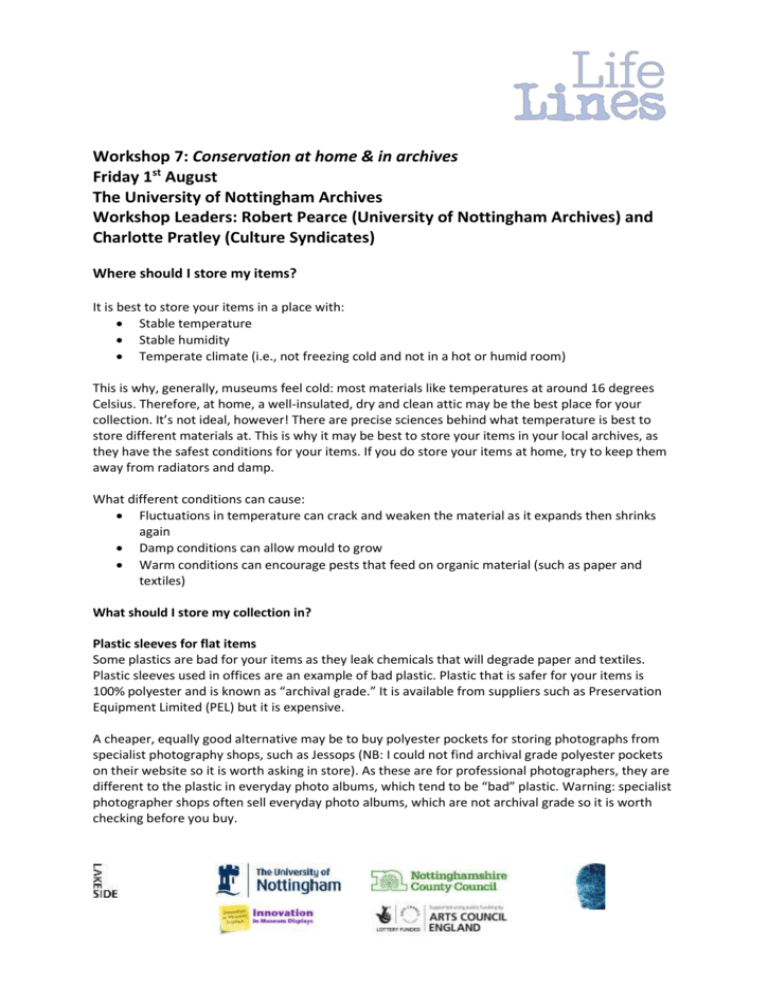
Workshop 7: Conservation at home & in archives Friday 1st August The University of Nottingham Archives Workshop Leaders: Robert Pearce (University of Nottingham Archives) and Charlotte Pratley (Culture Syndicates) Where should I store my items? It is best to store your items in a place with: Stable temperature Stable humidity Temperate climate (i.e., not freezing cold and not in a hot or humid room) This is why, generally, museums feel cold: most materials like temperatures at around 16 degrees Celsius. Therefore, at home, a well-insulated, dry and clean attic may be the best place for your collection. It’s not ideal, however! There are precise sciences behind what temperature is best to store different materials at. This is why it may be best to store your items in your local archives, as they have the safest conditions for your items. If you do store your items at home, try to keep them away from radiators and damp. What different conditions can cause: Fluctuations in temperature can crack and weaken the material as it expands then shrinks again Damp conditions can allow mould to grow Warm conditions can encourage pests that feed on organic material (such as paper and textiles) What should I store my collection in? Plastic sleeves for flat items Some plastics are bad for your items as they leak chemicals that will degrade paper and textiles. Plastic sleeves used in offices are an example of bad plastic. Plastic that is safer for your items is 100% polyester and is known as “archival grade.” It is available from suppliers such as Preservation Equipment Limited (PEL) but it is expensive. A cheaper, equally good alternative may be to buy polyester pockets for storing photographs from specialist photography shops, such as Jessops (NB: I could not find archival grade polyester pockets on their website so it is worth asking in store). As these are for professional photographers, they are different to the plastic in everyday photo albums, which tend to be “bad” plastic. Warning: specialist photographer shops often sell everyday photo albums, which are not archival grade so it is worth checking before you buy. If you cannot afford to buy archival grade plastic to store your whole collection, try thinking about what is most precious or vulnerable. If you have protein fabric such as silk (which degrades easily) or photographs (which tend to be chemically unstable), these might be items you should invest in proper storage for. If in doubt, your local archives can advise you. Tupperware for metal items Tupperware is ok for storing metal items as it is watertight. However, be careful as the nonbreathable nature of Tupperware creates a microclimate inside. This means that condensation might occur, leading to drips on the inside of the lid. This will damage the item. You can avoid this by putting a silica pad in the box to soak up the moisture. Silica pads are best used with metal, as textiles and paper don’t like to be too dry. The silica pad will need replacing though, so it is best to monitor it regularly. Rusty items If you have a rusty or corroded item, separate it from other items as it can damage them. Paper Flatten folded paper, as the folds create weaknesses in the fabric. Try not to bend the paper, especially along the folds. Paper documents should be stored flat in polyester pockets. Again, it may be cheapest to buy these from a photographer’s shop such as Jessops, just make sure they are 100% polyester/archive grade. Newspaper is extremely acidic, which is why it ages so badly, so if possible, keep it separate from the rest of your collections. If you have a large or whole newspaper that is too big for polyester pockets, interleave archival grade tissue between each newspaper sheet. Displaying your items at home If you want to display your items at home, it is best to make a good copy of them and display this instead, so the original is kept safely out of sunlight. You can make a good copy using a scanner and a printer, or a printing service may be able to do this for you (you could try Boots, for example). For further information on making a digital copy of an image, see Workshop 5 notes. Useful Links www.preservationequipment.com – for archive grade storage material (beware of the high delivery prices though!) www.jessops.com www.calphoto.co.uk These are commercial photographer shops NB: I could not find archival grade polyester pockets on their website so it is worth asking in store https://www.gov.uk/search-local-archives - find your local archive here
